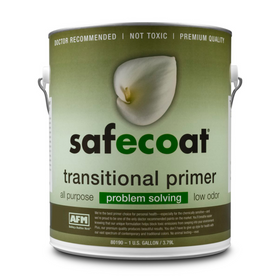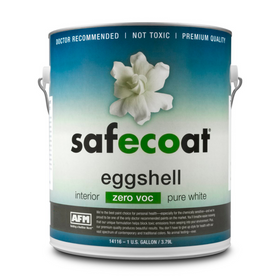
Myth Busting: Non-Toxic Paints Are Always Safe
Last Updated: Feb 26, 2025We all want homes that are free of potentially dangerous chemicals that negatively affect our indoor air quality. As anyone who has repainted a bedroom or the living room knows, that unpleasant “paint smell” can leave you feeling like you live in a laboratory and not a home. While low-VOC or no VOC paints are certainly an improvement over those lead-based paints of our grandparents and the high VOC parents that graced the walls of the houses we grew up in, are low, or zero VOC paints safe to use inside the homes we live in? Below we offer a complete breakdown of the potential dangers of paints considered low or no VOC.
Table of Contents
- What Are Volatile Organic Compounds (VOC)?
- How Long Does Low-VOC Paint off Gas
- What Does Low-VOC Paint Mean?
- Can You Trust Low-VOC Labels?

What Are Volatile Organic Compounds (VOC)?
Volatile organic compounds (VOC) is a chemical that contains carbon, and that is likely to exist in a gaseous state under normal conditions. Technically speaking, VOCs can exist in virtually everything, including the food we eat. Food-borne VOCs most likely cause the smell of fresh basil and oregano that you perceive when walking into an Italian restaurant. However, there is no need to shun your favorite pizza restaurant for fear of those VOCs.
When it comes to potentially dangerous VOCs inside paints, air fresheners, and dozens of other products commonly found in households worldwide, health advocates specifically target VOCs known or suspected to affect human health negatively. Many VOCs contain formaldehyde and benzenes, both of which are alleged to be known human carcinogens.
How Long Does Low-VOC Paint off Gas
The danger with VOCs is related to their potential to off-gas or give off vapors that linger inside homes and dangerously affect the quality of the air you breathe. Many products will off-gas more intensely in the days and weeks after application, and most off-gassing occurs during the first six months after application. The timeline will vary depending on the level of VOCs in the product. Sick building syndrome is a common illness suffered by members of the construction industry. It is widely believed to be associated with construction workers' proximity to home materials that off-gas high amounts of VOCs.
VOCs can continue to off-gas into a home for several years, depending on the type of chemicals used. The VOCs in paints are highly noticeable by the smell they emit after being applied to your walls. However, once the odors dissipate, that does not necessarily mean that the VOCs are no longer in your home. In well-sealed homes with minimal ventilation, VOCs can stick around for upwards of 10 years.
What Does Low-VOC Paint Mean?
One of the biggest problems when it comes to VOCs in paints is that there is no standard list of what constitutes a low VOC paint. While federal regulations put caps on the amount of VOCs in the paint (250 grams per liter for flat finished and 380 grams per liter for other finishes), that does not necessarily mean that all paint manufacturers have a list of different VOCs included in those numbers.
While several paint manufacturers do put paint products on the market that are significantly lower than the government regulations, the actual amount of VOCs can also be misleading. While the base paint may be low VOCs, the tint used to give the base paint color (the whole purpose of paint) also contains VOCs and may not be included in the low-VOC specification. As a general rule of thumb, darker colors most always contain higher VOCs in the tints used.
Also, several paint products that are labeled as low-VOC might be of noticeably poorer quality. To get the color you need, you may have to apply three (or more) coats of paint, which increases threefold the amount of VOCs you are applying on the walls of your home.
When the paint is labeled as low-VOC or No VOC, that does not mean that the paint is free of other dangerous chemicals. Many paints that brand themselves as low-VOC might include ammonia. While ammonia does off-gas (and it is not a pleasant smell), it does not contribute to VOC-related smog, which the government regulates as damaging VOCs. However, breathing in ammonia can lead to a burning sensation in your eyes and skin and even lead to long-term lung damage.
Many paints include fungicides that are meant to prevent the growth of fungus on your walls. While you don’t want moldy walls, the fungicides used in these paints can also off-gas potentially dangerous chemicals that you do not want to be breathing daily.
Many paint manufacturers aware of the growing consumer demand for low-VOC or no VOC paint have begun to turn to other chemical ingredients that might be even more dangerous. Crystalline silica is one ingredient often used in latex paints. While this chemical ingredient is not listed as a VOC in paints, the fine particles that can be breathed in during application might cause lung diseases such as silicosis and possibly even cancer.

Can You Trust Low-VOC Labels?
For people who are steadfast in their desire to limit the dangerous chemicals in their homes and who want protection that goes beyond the traditional low-VOC label, below we offer a few suggestions for how to find the safest paints to use inside your home.
- Find paints that follow the SQAQMD-113 Regulation. This air regulation standard originated in California but is now used nationwide. While this regulation might still omit some VOCs that could affect human health, it at least regulates VOCs present both in the base paint and in the tint used.
- Another certification you can search for is called GreenSeal. This certification is monitored by an independent, third-party system that strictly regulates several different types of VOCs.
- You could also opt to make your casein paints. Casein paints can be made from the curds of nonfat milk products (like the spoiled milk in your refrigerator). While this paint will take a little bit longer to dry than commercial paints, it will promise to be 100% free of any damaging chemicals if you use natural pigments to color the milk paint base.
For a complete guide to low and no-VOC paints, check out Rise's article here.
Tobias Roberts
Tobias runs an agroecology farm and a natural building collective in the mountains of El Salvador. He specializes in earthen construction methods and uses permaculture design methods to integrate structures into the sustainability of the landscape.










